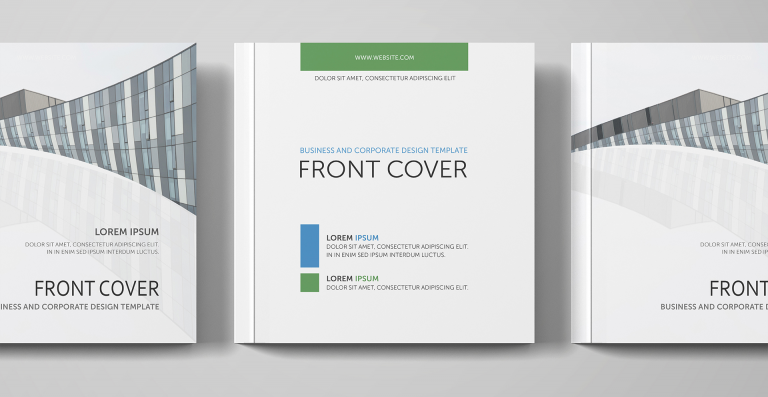What is a White Paper?
What's the significance of white papers in the modern economic world?
White papers have been around since the 1960s when they were first used by companies as a significant tool for self-promotion. Today, the definition of what makes up a white paper has changed as technology and new formats have been introduced. Generally speaking, white paper is a term used to describe published proposals for new or improved technologies, product ideas, and business models.
This article discusses how to create an effective white paper using a proposal generator , some of their main features, and their role in business nowadays.
What is a white paper?
A white paper is an informational document that is created by an organization to educate readers on the features and benefits of a product or service. Whitepapers require a formal tone and are written with a clear objective in mind, such as persuading people to purchase a certain product or convincing them to switch from one service provider to another.

White papers very often serve as advanced reference guide presenting the solution to a specific kind of problem. Very often they present also the research findings in a particular area. That is why they are often written by experts in the field or company representatives.
White papers are also used as a tool to help generate sales leads, build credibility, gain new customers or present the company's product.
In general, the goal of a whitepaper is to provide the reader with knowledge on the subject and help them make decisions.
Create a unique white paper with Publuu
When you start using proposal generator, you will never go back to a standard PDF format of your white paper.
Publuu offers you the opportunity to convert your PDF file into an interactive flipbook , company newsletter, or to create a stunning digital magazine . Your audience will be surprised by the form of your document and the amazing page-flipping effect which resembles the real reading experience. All you need to do is to prepare a PDF file and then upload it to Publuu; your document will convert into a flipbook in just a few seconds. But that's not the end! You can customize your flipbook by adding your brand logotype and matching background colors, diversifying it with some graphics and images, or including a few interactive links in a form of hotspots that can help you to engage your audience!
Publuu’s white paper example
View more online flipbook examples
Even if white papers are usually in a long-form, you don't need to worry about the size of your digital document. Publuu makes it easy to send it as a direct link, without any attachments in your email. Then it offers you an advanced tracking tool that will help you to see how your white paper performs in real-time. Using this function, you will have insight into the statistics, such as the amount of time your reader spent on each page and the number of interactions he takes with your white paper.
Publuu takes care of the clarity of your white paper. It uses vector fonts that can be zoomed in and out without losing quality which makes it much easier to read your whitepapers on mobile devices.
So, if you want your white paper to stand out from the crowd, you should definitely try Publuu!
What is the origin of a white paper?
The term "white paper" was first used in the late 1960s, when a company called Memorex produced an educational film about magnetic tape storage. In order to demonstrate how reliable this technology was, they had one of their engineers write a paper explaining how data could be stored on tape and then retrieved without error. This kind of guide was later considered as one of the first white papers.
Another popular white paper was written by IBM and titled “An Introduction to General Systems Thinking”. The paper was designed as a way for IBM to present its vision of the future and how it could help other organizations think about their own future challenges and opportunities.

It is said that the term "white paper" was officially defined in 1972. Nowadays, white papers are still widely used by corporations all around the world as a way to educate prospective customers on products or services that might interest them. They have also become a popular tool for start-ups and smaller businesses, as they allow these companies to promote their product or service without spending a lot of money on traditional advertising.
What are the main types of white paper?
There are many types of white papers, each with its own advantages and disadvantages. For example, some white papers may be more informative while others may be more promotional.
The most popular types of white papers are backgrounders, lists, or advanced problem-solving guides. For example, a backgrounder provides the reader with information relevant to a vendor's product, service, or methodology. It is the least challenging type to produce, thus the content is readily available as in-house material. Numbered lists, on the other hand, present the set of tips or questions on a particular issue. Below you will find a few more white paper examples.

Thought leadership white paper
This particular type of white paper is a document that is created to persuade readers to adopt a particular perspective or course of action. The white paper presents an argument for the position and then backs up that argument with evidence.
The goal of this white paper is to convince readers that the proposed solution is better than any other option for addressing the problem. It does this by presenting a compelling argument backed up by evidence and data.
Technical white paper
Technical white papers are often used to provide technical information and promote innovations in science or engineering, or to describe a particular product and its technical features.
Technical white papers are usually created by experts in the field of content. They are intended to be read by other experts in the same field. They are often not written with the intention of being read by people who do not have expertise in that area.

Problem-solving white paper
The problem-solving white paper is a type of document that is used to help to find a specific problem solution. The content should be concise and informative, but it should also be easy to read. It should also be designed in such a way that the reader can understand the solution to their problem quickly.
This type of document is usually written by an expert who has knowledge in the field of the problem being solved. It can also be written by someone who has experience with solving similar problems in the past. This person should have knowledge about how to offer an improved solution to this type of issue, as well as how to write effectively on the subject matter.
A good example of what this type of document would look like is when someone creates one for a company's HR department on how they can reduce employee turnover rates.
White paper and academic papers - what's the difference?
In theory, commercial white papers and scientific papers are very similar. They both place an emphasis on the content rather than design and neither will have any additional artwork or photographs.
Moreover, they both are around the same length - from 6-12 pages. Both of them have footnotes or endnotes which cite respected journals and experts for the information presented. While on the surface it might look like their formatting is similar, there is at least one important difference between white papers and academic papers.

A white paper is a document that provides information about a specific product or service. It is usually used to promote or sell a product or service. A scientific paper, on the other hand, is a document that provides information about research or results of experiments. Scientific papers outline their research findings in the executive summary or introduction, while white papers include them deeper into the document.
So the main difference is that scientific papers tend to have no promotional aim. The primary goal of an academic paper is to present new research results, either experimental or theoretical.
Thus, a white paper, unlike a scientific publication, is typically long and comprehensive, with sections that include an executive summary, background information, data analysis, conclusions, and recommendations and it’s often used as a marketing tool by companies to promote their expertise in a particular industry or subject matter.
What are the benefits of white papers for your business?
White papers are great for conveying complex ideas in quite simple language, which is why they are often used in the marketing and sales process. They can be used as part of an educational campaign to help customers understand how your product or service will benefit them.

The benefits of white papers include, for example, increased website traffic, more sales leads, improved search engine rankings, and last but not least, better customer engagement.
White papers contain information that is not found anywhere else on the web, which makes them highly valuable for SEO purposes. They are also great for generating leads because they give potential customers something to take away with them when they leave your site.
The white paper is helpful for those who want help with developing their sales pitch to potential clients. All in all, some companies use them as part of their sales process, while others use them to promote themselves and their products.
Writing white papers
A white paper is a long and detailed report that is usually created by experts. It provides readers with a comprehensive overview of a specific topic, in-depth analysis, and data. A white paper is typically created in a PDF file format. It is usually around 10-20 pages long, but can be shorter or longer depending on the complexity of the topic.
There are two ways to write a white paper:
1) Hiring someone to write it for you or
2) Writing it yourself.
Hiring someone to write a white paper for you can be expensive, but it will save you time and effort in the long term. This way, you won't have to worry about writing an essay that's 1,500 words long or finding relevant sources.
If you decide to write your own white paper, then the first step is to brainstorm ideas and topics. You need to know what your specific audience wants so that you can provide them with what they need. If you’re not sure where to start, use Google Trends or Google Keyword Planner and search for keywords related to your industry.
The second step to writing a white paper is to identify your target audience. A white paper should be targeted at people who are interested in the subject you are writing about. This will help you decide what information to include and what angle you should take when presenting it.
The next step is doing research on the topic of your white paper by reading other relevant documents, books, articles, and data. The last step is to create your white paper that will be published on the Internet.

There are four main components of an effective white paper:
The introduction
The introduction of a white paper should be an attention-grabbing paragraph that compels readers to continue reading. It should also include an outline of what is covered in the paper, as well as any benefits that are included in the paper. You can start with an anecdote or quote that will catch the reader's attention.
The main body
The body should contain 3-5 sections, each one focusing on a specific aspect of your topic. The content of the white paper usually includes descriptions of the benefits of using the product or service being marketed, a list of features and benefits, details on how it works, and what it costs to purchase or use it, customer testimonials, and case studies where possible.
The conclusion
The conclusion should summarize the main points of your argument and leave the reader feeling satisfied with what they have read. You can include an appendix at the end that provides additional information for those interested in learning more about your topic.
What about the white paper format? White papers are usually written in a standard document format. They are more similar to a research paper than traditional reports.
White papers in content marketing strategy
A high-quality white paper can serve as a powerful content marketing tool for companies. It is an effective way to showcase the company’s expertise and establish its thought leadership position in the marketplace. It also helps to generate leads and get to a wider audience.
The white paper is a very popular form of digital marketing because it provides a valuable service to the reader and then asks them to take the action at the end of it. This makes it easier for companies to convert leads into customers. Company marketers often create this kind of in-depth report about a specific issue, or particular methodology to teach the reader, solve their problems, and as a result, generate leads.

The business-to-business (B2B) white paper is designed to provide the reader with detailed information and relevant content so they can make an informed decision. The purpose of this type of digital marketing is to educate the reader and encourage them to purchase products or services from the company that created the document. This way, white papers are a great tool for lead generation and potential customers search.
So, in content marketing, white papers are mainly used for:
- creating awareness of your company or product among clients,
- persuading customers to buy your product or service,
- providing educational material for your customers.
The white paper can be distributed through email, social media, and other digital channels. It can also be distributed through physical channels such as direct mail or by handing them out at trade shows and conferences.
What is a white paper - conclusion
White papers are typically used by companies, financial institutions, or government organizations to generate interest in their product or service, and they can be very effective in this regard. They are devoted to a specific audience and are very often used for building trust and finding a solution to a concrete problem statement.
A traditional white paper discusses some technical information or presents original research on a given topic. It is also a great content marketing tool - marketers use white papers as a lead generation tool to get potential clients interested in their business.
You may be also interested in:
How to Create an Effective Business Presentation?
Tips For a Good Company Presentation
The Best Free Interactive Presentation Software in 2026